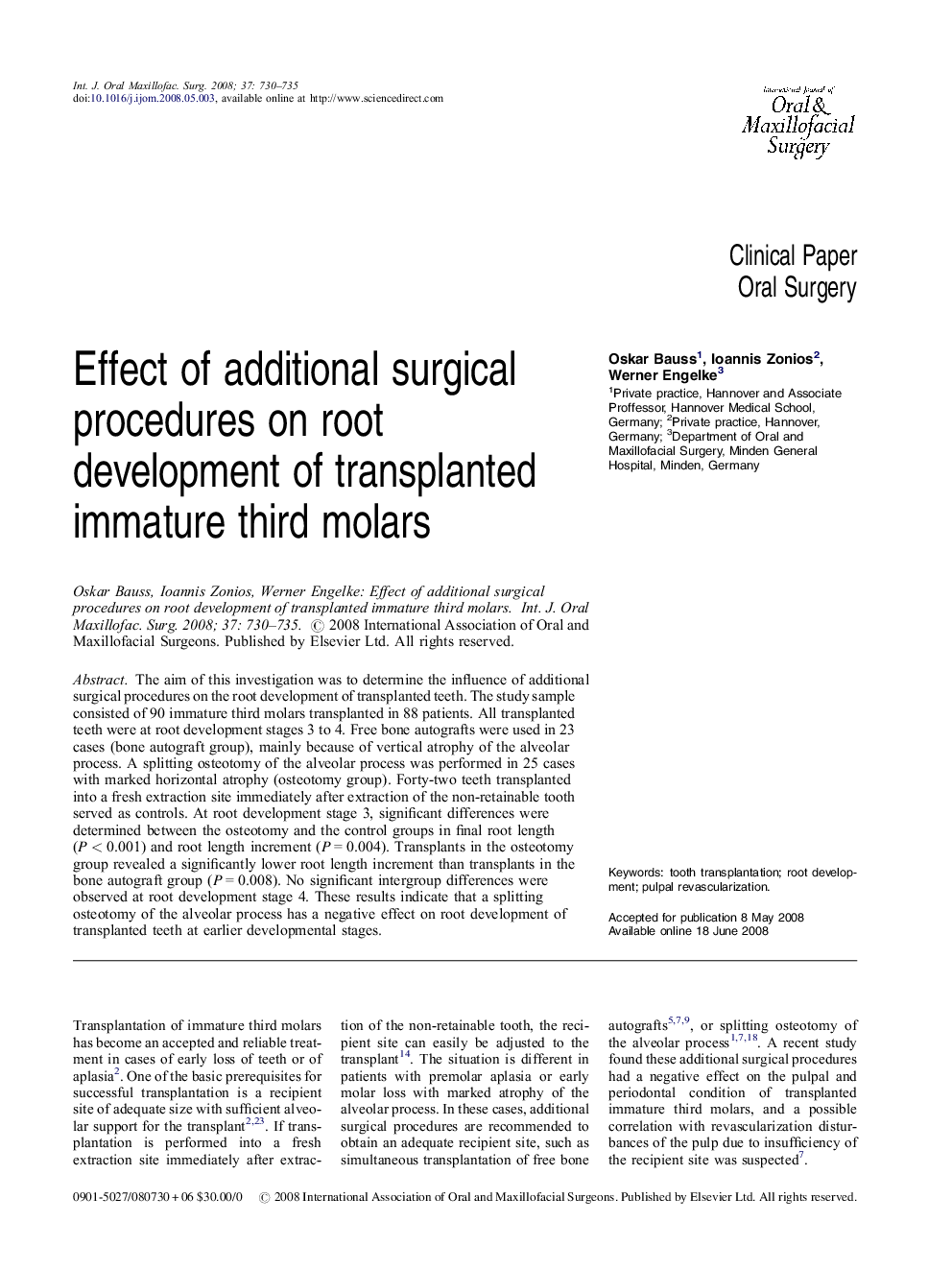| Article ID | Journal | Published Year | Pages | File Type |
|---|---|---|---|---|
| 3134284 | International Journal of Oral and Maxillofacial Surgery | 2008 | 6 Pages |
Abstract
The aim of this investigation was to determine the influence of additional surgical procedures on the root development of transplanted teeth. The study sample consisted of 90 immature third molars transplanted in 88 patients. All transplanted teeth were at root development stages 3 to 4. Free bone autografts were used in 23 cases (bone autograft group), mainly because of vertical atrophy of the alveolar process. A splitting osteotomy of the alveolar process was performed in 25 cases with marked horizontal atrophy (osteotomy group). Forty-two teeth transplanted into a fresh extraction site immediately after extraction of the non-retainable tooth served as controls. At root development stage 3, significant differences were determined between the osteotomy and the control groups in final root length (PÂ <Â 0.001) and root length increment (PÂ =Â 0.004). Transplants in the osteotomy group revealed a significantly lower root length increment than transplants in the bone autograft group (PÂ =Â 0.008). No significant intergroup differences were observed at root development stage 4. These results indicate that a splitting osteotomy of the alveolar process has a negative effect on root development of transplanted teeth at earlier developmental stages.
Related Topics
Health Sciences
Medicine and Dentistry
Dentistry, Oral Surgery and Medicine
Authors
Oskar Bauss, Ioannis Zonios, Werner Engelke,
